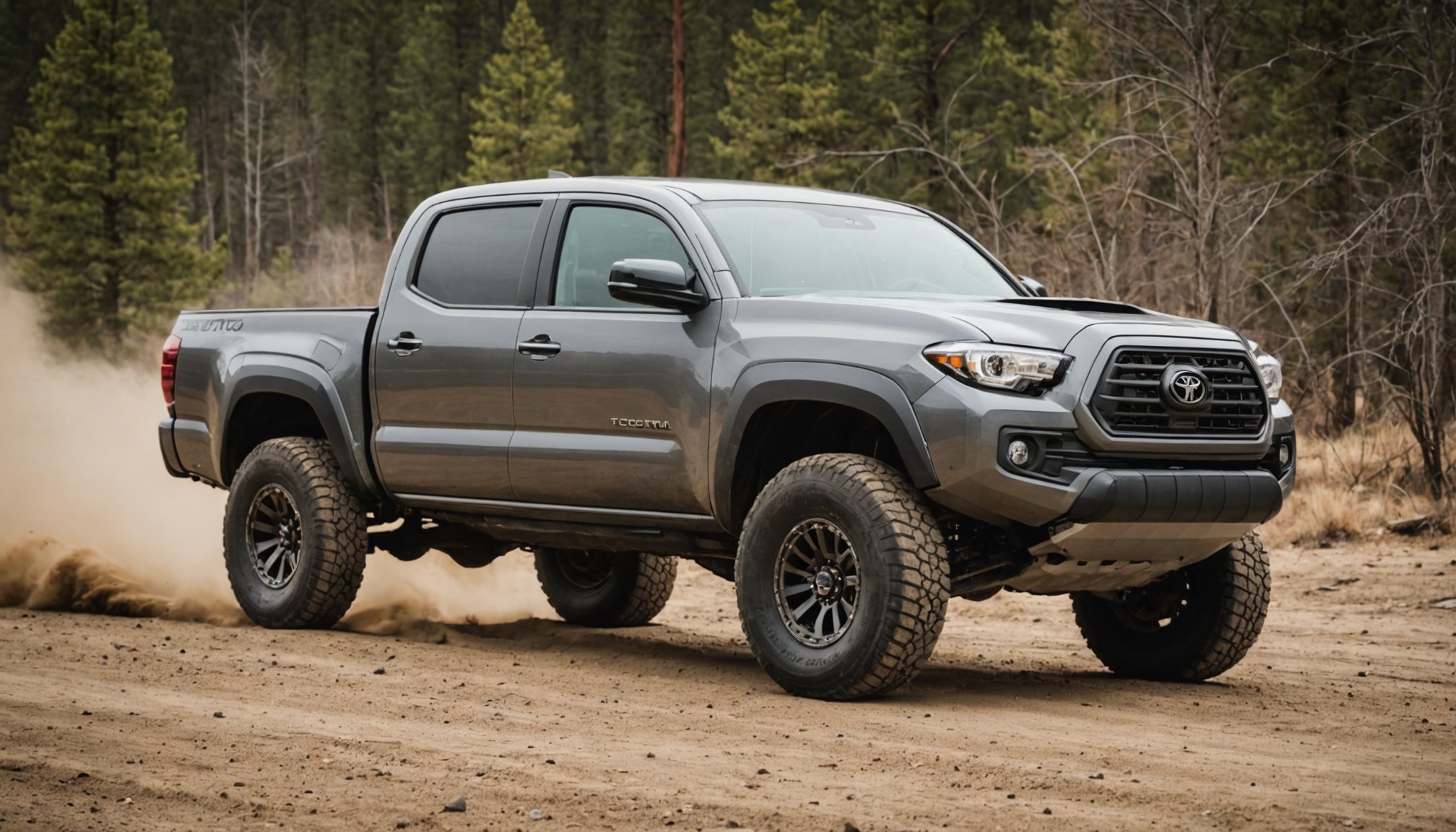Understanding Rear Differential Gear Ratios
Rear differential gear ratios play a crucial role in the mechanics of any vehicle, especially when it comes to towing capacity and performance. The gear ratio is the relationship between the number of rotations of the driveshaft and the rear wheels. These ratios determine how many times the driveshaft must turn to spin the wheels once. The functionality is vital for translating engine power into torque, which directly affects speed and load-handling capabilities.
Importance of Gear Ratios in Towing Performance
A well-chosen gear ratio enhances a vehicle’s towing performance by allowing the engine to operate efficiently within its power band. This is particularly important when towing heavy loads, as the gear ratio can influence the towing capacity by optimizing torque output. Lower gear ratios (numerically higher) offer more torque, making it easier to tow heavy loads from a standstill. Conversely, higher gear ratios (numerically lower) prioritize speed over pulling power.
Also read : Boost Your Nissan Titan’s Towing Power: Why a Transmission Cooler is Essential
Impact of Different Gear Ratios on Torque and Speed
Different gear ratios impact a vehicle’s torque and speed in distinct ways. A lower gear ratio increases the engine’s torque output, which is beneficial for towing heavy and large loads. However, this comes at the expense of top speed and fuel efficiency. On the other hand, a higher gear ratio allows for greater speed but sacrifices some of the pulling power needed for effective towing. Selecting the optimal gear ratio thus requires a balance between the desired speed and the towing needs of the vehicle.
How Gear Ratios Affect Towing Performance
The gear ratio is significant in influencing a vehicle’s towing performance, especially in how torque is distributed. This relationship between gear ratio and torque is fundamental, as lower gear ratios (numerically higher) enhance towing capabilities by providing increased torque. This means that the engine can deliver more power to the vehicle’s drive wheels, making it easier to tow heavy loads from a standstill.
Have you seen this : Ultimate Winter Prep: Easy Engine Block Heater Installation for Your Chrysler 300
Relationship between Gear Ratio and Torque
A vehicle’s towing performance greatly depends on the torque available to handle different weights efficiently. Lower gear ratios amplify torque, which is essential when initial pulling power is critical, such as towing a trailer. This setup reduces the engine’s burden, prevents strain, and ensures smoother acceleration. Conversely, higher gear ratios (numerically lower) typically result in reduced torque and improved speed but are less effective for towing due to decreased pulling power. This trade-off highlights the power distribution choices that need to be made, prioritizing either performance or speed.
Influence on Vehicle Speed
While gear ratios are crucial for enabling torque, they also significantly affect a vehicle’s maximum speed. Optimizing for towing by selecting a lower gear enables better torque but can limit top speed and impact efficiency. Higher gear ratios allow vehicles to achieve better speeds, making them ideal for situations where agility and travel pace are prioritized. However, these settings might compromise the vehicle’s ability to tow heavy loads effectively. Thus, aligning gear ratios with intended use is necessary for maintaining a balance between speed and power.
Load Handling Capabilities
Selecting the right gear ratio is critical in enhancing a vehicle’s ability to handle various load weights. A well-calibrated gear ratio ensures the drivetrain distributes power efficiently, optimizing towing performance and supporting load stability. Vehicles equipped with improper gear ratios, especially in towing scenarios, can suffer from poor acceleration and stability issues. Therefore, understanding the relationship between gear ratios and load handling is essential for those who frequently tow, ensuring both vehicle safety and performance are maintained.
Understanding Rear Differential Gear Ratios
Rear differential gear ratios are a fundamental element in the mechanics of vehicles, significantly impacting towing capacity and performance. The rear differential works as an intermediary between the driveshaft and the wheels. It is responsible for allowing the wheels to rotate at different speeds, which is crucial when a vehicle turns, preventing wheel slippage. This mechanism involves coordinating the gear ratio, which defines how many rotations the driveshaft makes to turn the wheels once.
Through understanding the role of rear differential gear ratios, one can appreciate their importance in transferring engine power into torque. This conversion affects the vehicle’s ability to handle speed and carry loads effectively, thereby enhancing its overall towing capacity. In essence, the selection and adjustment of these gear ratios dictate the vehicle’s performance by balancing power distribution and efficiency—key aspects in achieving the desired blend of speed and towing ability.
Selecting the Right Gear Ratio for Toyota Tacoma
Choosing the right gear ratios can dramatically enhance the performance of your Toyota Tacoma, especially when towing capacity is a primary concern. Selecting an optimal ratio requires evaluating several factors such as the engine power band, the type of terrain encountered, and towing requirements. Differential gear ratios are a critical consideration; they balance between torque needed for towing and the speed desired for daily driving.
Factors to Consider in Gear Ratio Selection
When choosing gear ratios for your Tacoma, you need to weigh the frequency and weight of the loads you’ll be towing. Considerations should include:
- Power needs for various terrain types: Rugged landscapes may require lower gear ratios.
- Desired balance of speed to pulling power: How often you tow versus cruise at higher speeds.
- Longevity of engine performance
Stock Versus Aftermarket Gear Ratios
Stock gear ratios are typically designed to balance general driving conditions, whereas aftermarket options can be tailored to specific towing needs. Aftermarket ratios often offer enhanced towing capacity by improving torque at the expense of high-speed efficiency. They allow for customization in applications where more power is needed from a standstill, such as towing up steep inclines or hauling heavier loads.
Recommendations for Specific Towing Needs
For towing trailers or heavier weights, select gear ratios that prioritize torque to mobilize heavier loads swiftly. A numerically higher, lower gear ratio might be more suitable for these applications. This setup ensures maximum pulling power, perfect for those who frequently tow. Consider consulting with a professional for recommendations tailored to specific towing demands, especially when navigating varying weights and terrains.
Practical Tips for Adjusting Gear Ratios
Adjusting gear ratios in your vehicle can improve performance and optimize your towing capacity. Whether you’re seeking better torque or higher speed, selecting the appropriate differential is crucial. Proper adjustment ensures that your vehicle meets your precise driving needs and enhances overall functionality. Below are practical insights to aid you in this process.
Tools and Equipment Needed
To begin the adjustment of your gear ratios, having the right tools and equipment is essential. Essential items include:
- Socket sets and wrenches
- Jack and stands for vehicle support
- Torque wrench for accurate tightening
- Differential fluid for maintenance post-adjustment
Equipping yourself with these tools allows for a smooth transition during the gear modification process, ensuring optimal installation and performance.
Step-by-step Adjustment Process
-
Prepare the Vehicle: Secure the vehicle using jacks and stands, ensuring stability.
-
Remove Differential Cover: Drain the differential fluid and remove the cover to access the gears.
-
Mark and Remove Old Gears: Clearly mark the position of the existing gears before removal to ensure new gears align correctly.
-
Install New Gears: Position the new gear set, ensuring they are precisely aligned with the manufacturer guidelines.
-
Reassemble and Fill Fluid: Refit the differential cover and fill it with the recommended differential fluid.
Following these steps meticulously provides a structured approach to altering your vehicle’s gear ratios effectively.
Common Pitfalls and How to Avoid Them
While adjusting rear differential gear ratios, common errors can lead to complications:
-
Incorrect Torque Settings: Not adhering to the recommended torque settings can cause gear slippage or damage.
-
Improper Gear Alignment: Failing to align new gears with the manufacturer’s specifications can result in reduced performance or mechanical failure.
Avoid these pitfalls by meticulously following instructions, utilizing a torque wrench for accuracy, and consulting the vehicle’s manual or a professional for guidance. Understanding the intricacies of your vehicle’s gear system is pivotal to successful differential gear adjustments.
Products and Resources for Gear Ratio Upgrades
When considering gear ratio upgrades, investing in high-quality aftermarket parts can significantly enhance your Toyota Tacoma’s performance. Understanding the various differential kits available is crucial for making an informed decision.
Review of Popular Aftermarket Differential Gear Kits
Selecting the right differential gear kit can dramatically improve towing performance. Look for kits known for their durability and ability to optimize torque and speed. Popular choices among Tacoma owners often include brands that specialize in off-road and towing applications. These kits are designed to handle increased strain and wear, prolonging the life of your drivetrain.
Expert Endorsements and User Testimonials
Expert opinions and user experiences serve as valuable resources when choosing gear upgrades. Mechanics and auto enthusiasts usually recommend kits that balance performance with reliability. User testimonials can provide insights into real-world application, highlighting benefits like improved towing capacity and enhanced driving experience. Engage with online forums or local car clubs to gain first-hand accounts from Tacoma owners.
Where to Find Reliable Resources and Installation Guides
For the comprehensive installation of aftermarket parts, access to reliable guides is essential. Many manufacturers provide technical manuals or online resources detailing installation processes. Additionally, automotive websites and enthusiast forums often offer step-by-step instructions and support. For those who prefer professional assistance, local garages specializing in Toyota vehicles can aid in ensuring proper installation and performance enhancement.


